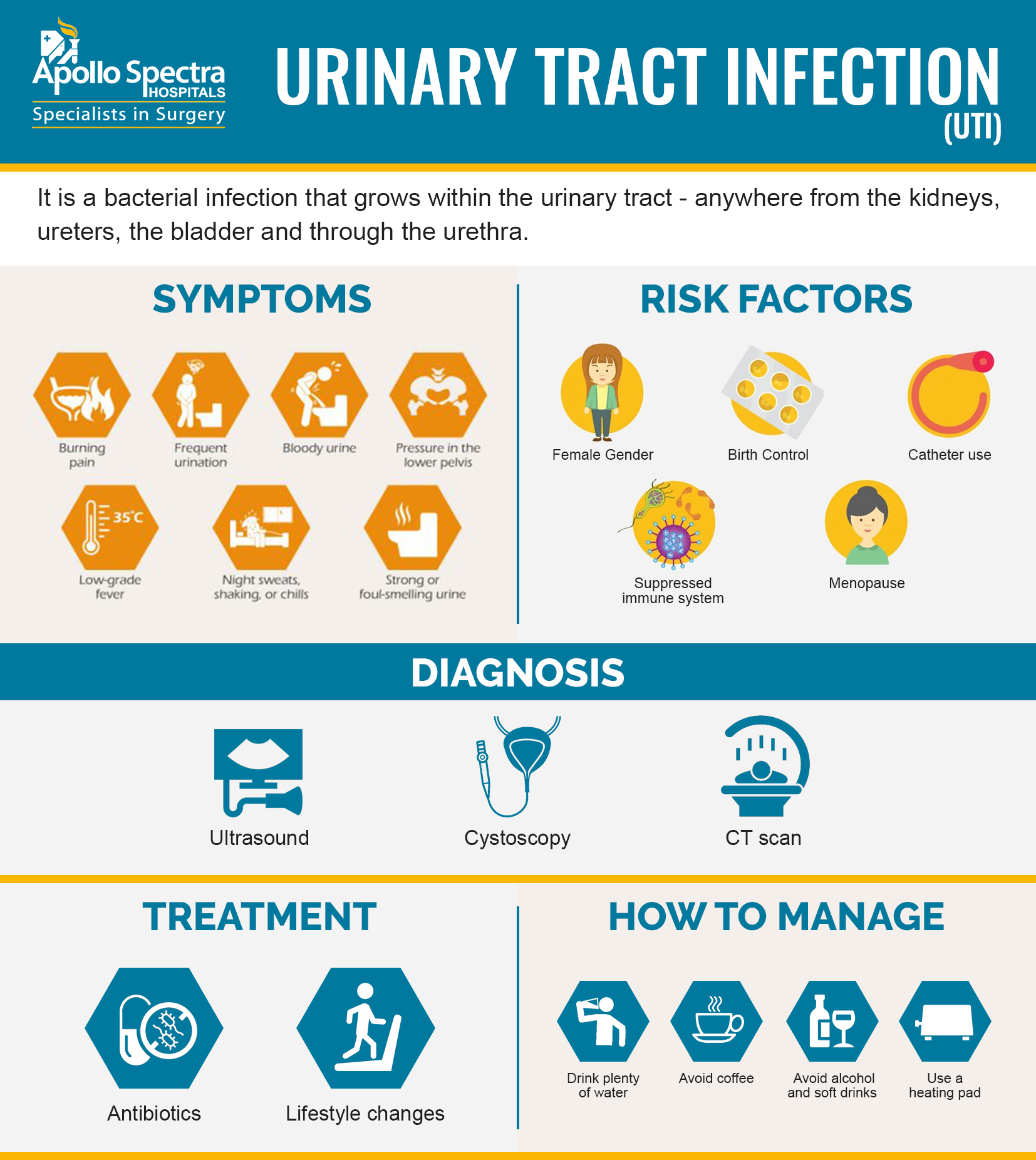What is UTI (Urinary Tract Infection) and how it is diagnosed?
May 21, 2019 and how it is diagnosed.webp)
Most of us have experienced a burning sensation while urinating. This is caused by a bacterial infection which we might have contacted from an unclean bathroom stall. The bacteria might also move from our digestive tract to our urinary tract. The infections can be treated depending upon their severity; however, it is advisable to take maximum preventive measures.

A urinary tract infection may be symptomatic as well as asymptomatic. Some of the common symptoms are:
- Incessant urge to pee
- Irritation while urinating
- Persistent but small quantity of urine
- Cloudy and colored urine
- Strong odour in urine
- Discomfort in the pelvis
The major cause of urinary tract infection is the penetration of the bacteria in the urinary tract via the urethra and its multiplication in the bladder. The urinary tract is aligned in a way that such bacteria can be kept at bay but sometimes the tract fails in its functioning and the bacteria find their way through. These infections can broadly be categorized into two:
- Cystitis – The infection developed in the bladder is called cystitis. It is mostly induced by E.Coli.
- Urethritis – The infection developed in the urethra is called urethritis. It exists when the bacteria from the gastrointestinal tract travel to the urethra.
Women have a shorter urethra when compared to men; hence are more prone to UTI. Sexual activity is also linked to the spread of UTI; hence preventive measures must always be adopted. Post menopause, lower levels of estrogen also make a woman more prone to being infected by a UTI. Sexually active women who use birth control measures should also be careful while choosing the measure they wish to adopt since certain birth control measures also make a woman more prone to the risk of getting infected. UTI can also cause various complications, including;
- Repetitive infection
- Acute or chronic kidney failure
- Pregnant women may have premature babies
There are various medical interventions that can help validate the UTI. Some of these include:
- Analysis of urine sample
- Urine Culture to understand the kind of bacteria that has caused infection
- CT Scan or MRI to check the root cause of persistent infection
- Cystoscopy to check for recurrent UTI
The treatment for a UTI usually begins with the prescription of antibiotics. The kind of antibiotics depends upon the health condition and the kind of bacteria diagnosed. For simple infections, the dosage may be for only two to three days. For frequent infections, antibiotics may be prescribed for months but in case of severe infection, the course of treatment may also involve surgeries or lighter incision and drainage procedures to help cure the infection. Certain kind of infections call for lifetime adoption of preventive measures.
Frequent and severe UTIs may cause agony and discomfort; however, certain changes in the lifestyle can help lessen the pain. It is advisable to consume plenty of water since it helps dilute the urine and clear out the bacteria. Caffeine, alcohol and citrus juices should be avoided since they may trigger the irritation in the bladder. A heating pad can be applied on the abdomen to reduce any pressure or uneasiness. In certain cases, consumption of cranberry juice has proven to be effective in subsiding the occurrence of UTI; however, no evidence in this matter exists. Despite showing good results in most cases, it should not be consumed when a person is on blood-thinning medication. The following tips may help a person suffering from or prone to a UTI:
- Urinate as frequently as you feel the urge to do so
- Consume plenty of water
- Ensure that you wipe yourself from front to back post urination
- Try to replace your regular baths with showers
- Avoid scented products while bathing since they tend to trigger irritation
- Urinate after intercourse to ward off any bacteria that you may have come in contact with
- Avoid using diaphragms or un-lubricated condoms
- Give your wardrobe a makeover. Replace your tight-fitted jeans and nylon undergarments with cotton and loose-fitted apparel to keep the lower part healthy
- Avoid using public washrooms
- Always carry and use toilet seat sanitizer sprays to avoid infections.
UTI stands for urinary tract infection. It is a bacterial infection that affects any part of the urinary system, including the kidneys, ureters, bladder, and urethra.
Tests to diagnose UTI are Urine analysis, Urine culture & Imaging tests.
NOTICE BOARD
CONTACT US
CONTACT US
 Book Appointment
Book Appointment


.svg)
.svg)
.svg)
.svg)








